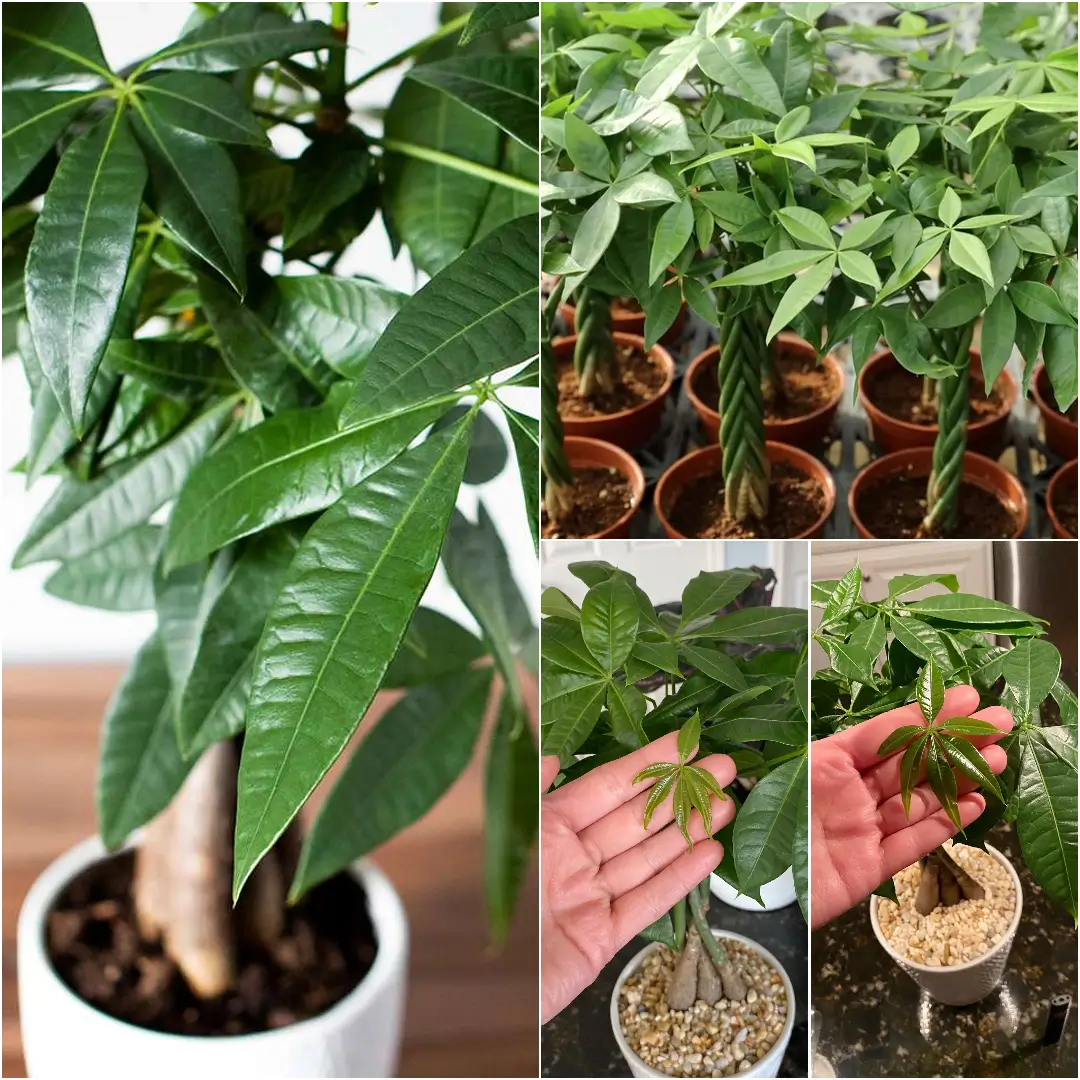A money tree isn’t just a charming houseplant; it’s a symbol of good fortune, an easy-care addition to your home, and a conversation starter. Native to Central and South America, this hardy tree has earned a place in many households due to its resilience, aesthetic appeal, and low-maintenance requirements. But like any plant, the money tree needs a little bit of TLC to truly thrive. Wondering how to care for your money tree and ensure it brings you both beauty and luck? Let’s dive into everything you need to know.
What Exactly is a Money Tree?
Before we jump into the nitty-gritty of plant care, let’s talk about what makes the money tree special. Scientifically known as Pachira aquatica, the money tree is often associated with the ancient practice of Feng Shui, believed to bring positive energy and prosperity. You might recognize it from its iconic braided trunk, which is said to trap good fortune in its folds. Whether you buy into the superstition or not, there’s no denying that the money tree is an attractive plant, especially when it grows up to 6-8 feet tall indoors!
Now, let’s look at how you can ensure your money tree stays happy and healthy.
Light: Bright Yet Indirect Sunlight is Key
One of the most important aspects of caring for a money tree is understanding its light requirements.
How Much Light Does a Money Tree Need?
Money trees thrive in bright, indirect sunlight, meaning they love a well-lit spot without being exposed to harsh direct sunlight. Think of a sunny room where the plant can bask in the light without getting sunburned. At least six hours of bright to medium indirect sunlight each day will keep your money tree happy.
What Happens If It Doesn’t Get Enough Light?
Don’t have enough natural light? No worries! You can use grow lights to supplement what the sun can’t provide. A leggy plant with sparse growth is often a sign of insufficient light, so keep an eye on how your money tree is doing, and make adjustments as needed. If you notice the plant looking stretched out, it’s practically begging for more light!
Soil: Choosing the Perfect Mix
Money trees aren’t too fussy when it comes to soil, but they do have preferences.
What Type of Soil is Best for a Money Tree?
Your money tree will thrive in a well-draining potting mix, ideally one that’s peat-moss-based. Why peat moss? It ensures the slightly acidic environment (pH 6.0-7.5) your money tree loves. Well-drained soil is essential because it prevents water from sitting around the roots, which could lead to root rot—a death sentence for many plants.
Can You Use Regular Potting Soil?
If you don’t have peat moss-based soil handy, a quick-draining soil mix designed for cactus plants will also do the trick. For added drainage, consider mixing in some perlite or coarse sand.
Watering: Finding the Right Balance
Watering a money tree is all about balance. Too much, and you risk drowning the roots; too little, and the plant dries out. So, how do you get it just right?
How Often Should You Water a Money Tree?
In general, water your money tree when the top inch of soil feels dry to the touch. During the spring and summer, your money tree is actively growing, so it will need more frequent watering. However, as the fall and winter roll around, you’ll want to dial back your watering schedule since the plant enters a resting phase.
Tips to Prevent Overwatering
Money trees are highly susceptible to root rot, which happens when the soil stays too wet for too long. To avoid this, make sure your pot has large drainage holes, and always empty out the saucer after watering. Another trick? Stick your finger into the soil; if it feels dry at the top, it’s time to water, but if it’s still damp, give it a few more days.
Temperature and Humidity: Keeping It Cozy
Money trees are tropical plants, so they prefer conditions that mimic their natural habitat.
What Temperature is Ideal for a Money Tree?
Aim to keep your money tree in an environment between 65°F and 75°F. Avoid placing it near cold drafts or heating vents—extreme temperature fluctuations can stress the plant and cause leaf drop.
How to Increase Humidity for Your Money Tree
Most homes are a bit too dry for money trees, especially during the winter when heaters are running. To keep your plant happy, you can boost humidity by:
- Placing the pot on a tray filled with pebbles and water.
- Misting the leaves regularly.
- Using a small space humidifier nearby.
These little tricks create a more humid environment that mimics the money tree’s tropical origins.
Fertilizer: Feeding for Growth
Just like us, plants need food to grow strong. While your money tree won’t need as much food as some other plants, regular feeding can help it thrive.
When and How to Fertilize a Money Tree
During the active growing season (spring and summer), fertilize your money tree once a month using a diluted all-purpose houseplant fertilizer. As the colder months arrive, you can cut back to feeding the plant every other month, as it’s not growing as actively.
Pruning: Encouraging Growth and Shape
Money trees are generally low-maintenance, but a little bit of pruning goes a long way in keeping them looking their best.
How to Prune a Money Tree
Start by trimming off any yellow or dead leaves, which will redirect the plant’s energy towards new growth. If your money tree has multiple stems, you can prune some of the lower leaves to encourage growth at the top, giving the plant a fuller look.
Braiding a Money Tree’s Trunk
If your money tree has multiple young and flexible stems, you can even try braiding the trunk. Not only does this add to its aesthetic appeal, but many believe it enhances the plant’s ability to bring good fortune. Braiding is easiest when the stems are still soft, so act fast before they harden with age!
Propagation: Growing More Money Trees
Looking to expand your money tree collection or share the wealth with friends? Money trees are easy to propagate.
How to Propagate a Money Tree
The best way to propagate a money tree is by taking stem cuttings in the spring or summer. Here’s how to do it:
- Take a 4-inch cutting from a healthy stem, making sure it includes a couple of nodes.
- Remove some of the lower leaves, then place the cutting in water.
- Once you see roots forming, plant the cutting in a pot filled with well-draining potting mix.
- Care for your new money tree just as you would a mature one—soon, you’ll have a whole new plant!
Potting and Repotting: A Comfortable Home for Your Tree
Potting your money tree properly ensures it has the space and nutrients to grow strong.
What Size Pot Does a Money Tree Need?
Money trees prefer to be slightly root-bound, so don’t rush to repot your plant unless it’s outgrowing its container. When repotting, use a 6-inch pot with large drainage holes, as money trees hate sitting in water.
When to Repot a Money Tree
Repotting isn’t necessary unless you want your money tree to grow larger. If you’d like to keep it small and manageable, keep it in a smaller pot. If you do decide to repot, aim to do so during the spring when the plant is in its active growth phase.
Common Pests and Diseases: Troubleshooting Problems
Like all houseplants, money trees are not immune to pests and diseases, but don’t worry! With a bit of vigilance, most problems can be handled with ease.
What Pests Are Common on Money Trees?
Money trees are particularly prone to mealybugs and scale insects. If you notice sticky residue on the leaves or see small white bugs, it’s time to act.
How to Treat Pest Infestations
Use a mild insecticide or neem oil to treat infestations. Regularly checking your plant and cleaning its leaves can also help prevent pests from setting up camp in the first place.
Common Problems: Yellow Leaves, Soft Stems, and Leggy Growth
Even though money trees are relatively easy to care for, a few common issues can crop up. Here’s how to tackle them.
Why Are My Money Tree’s Leaves Turning Yellow or Brown?
Yellow or brown leaves are usually a sign of overwatering or underwatering. If the leaves are also curling, the plant is likely not getting enough water. On the flip side, if the leaves are discolored but not curling, overwatering is the culprit.
Soft Stems or Trunk?
A soft, mushy stem is a clear indicator of overwatering. In this case, the best course of action is to let the soil dry out and reduce your watering schedule.
Why is My Money Tree So Leggy?
Leggy growth—when the plant looks stretched out with long gaps between leaves—is usually a sign of insufficient light. Try moving your money tree to a brighter spot to encourage fuller growth.
Caring for Your Money Tree
Caring for a money tree doesn’t have to be complicated. With the right balance of light, water, and occasional care, this plant will not only thrive but add beauty and positive vibes to your home. Think of it as a low-maintenance companion that rewards your effort with lush green leaves and possibly a bit of good fortune! Whether you’re pruning for shape, braiding the trunk for a decorative touch, or propagating it to grow your collection, a money tree can become a focal point in any room. Now that you know all the essentials, your money tree is set up for success, and who knows, maybe a little extra luck will come your way too.
FAQs
How do you care for a money tree indoors?
Caring for a money tree indoors involves ensuring it gets bright to medium indirect sunlight for at least six hours daily. Water it regularly, keeping the top inch of soil dry between waterings, and maintain a temperature range of 65-75°F. It’s also crucial to increase humidity around the plant and fertilize monthly during the growing season.
How often do you put water in a money tree?
Water your money tree when the top inch of soil feels dry to the touch. This typically means watering once a week during spring and summer. In the fall and winter, you can reduce this frequency to every two weeks, depending on the humidity in your home.
Where should I put my money tree?
Place your money tree in a location that receives bright to medium indirect sunlight for at least six hours a day. A spot near a window with filtered light works well. Avoid placing it near drafts or direct sunlight, as this can scorch the leaves.
Why are my money tree leaves dying?
Dying leaves on a money tree can indicate various issues, primarily related to watering. Yellowing leaves often signal overwatering, while browning edges might indicate underwatering or insufficient light. Adjusting your care routine based on these signs can help revive your plant.


